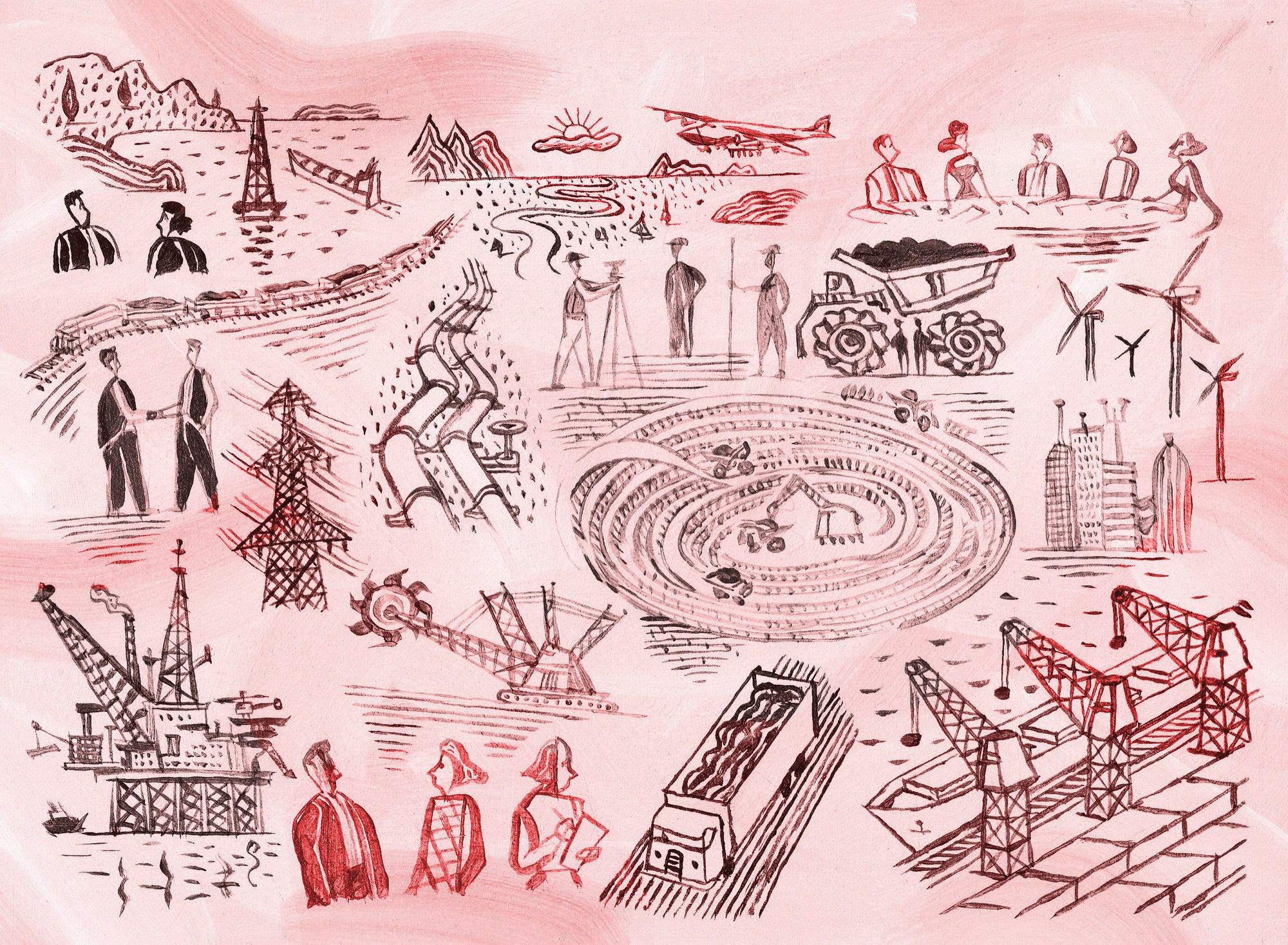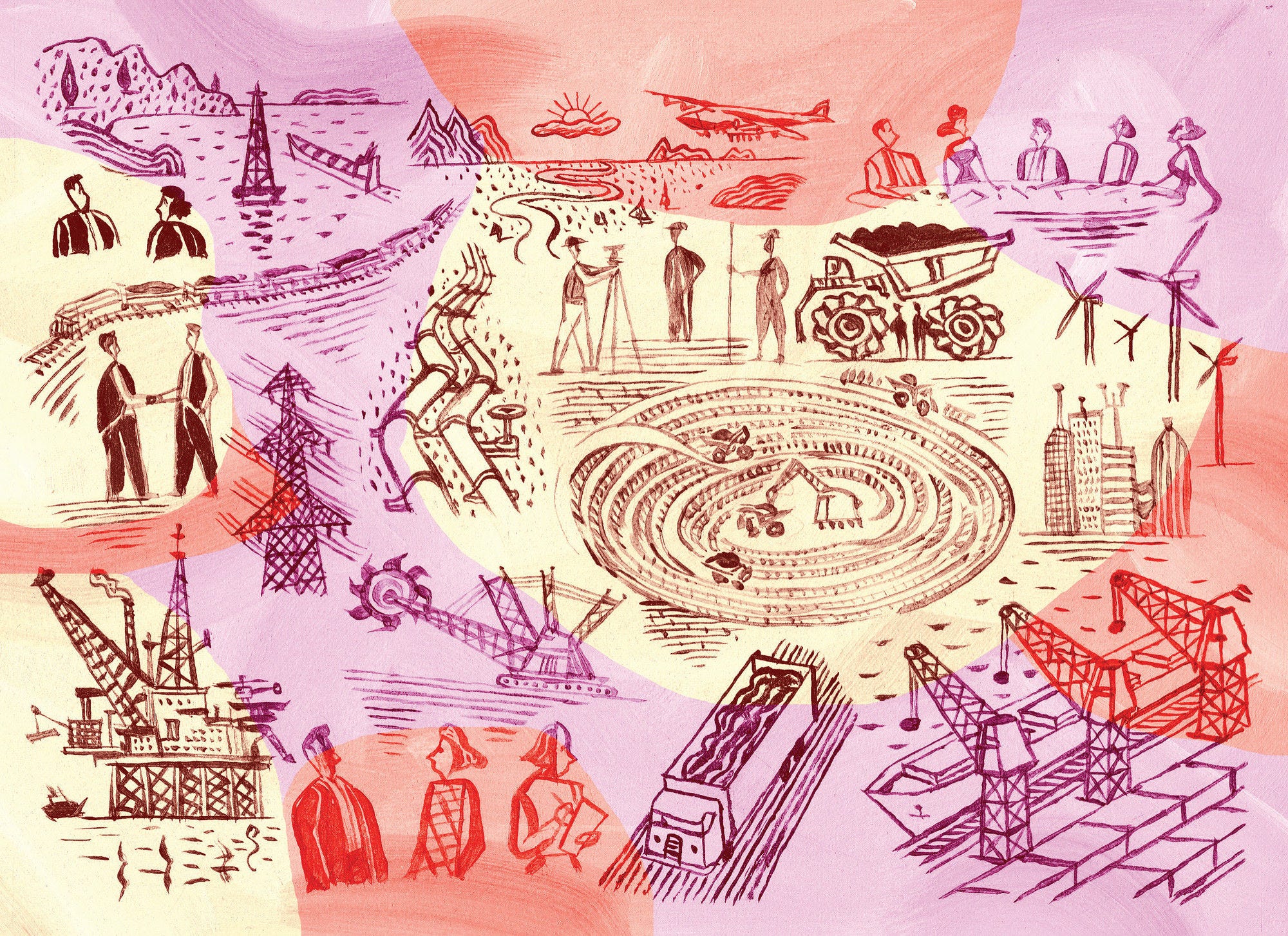The Pilbara is one of nine regions located in the state of Western Australia. It is known for its thriving mining and resource extraction industries. The region is large and has a low population density. Its geographical size is equivalent to Spain but 780 times less populated, which places it among the 5% least densely-populated regions in the OECD. While the Pilbara’s industrialisation is relatively recent, dating back to the 1960s when towns were established to accommodate the mining workforce, First Nations peoples (Indigenous or Aboriginal) have inhabited the region for approximately 50 000 years. For many, the Pilbara is a difficult place to live, given its harsh climate and distance to major cities but, for First Nations peoples, it is the place where its ancestral, kinship, community, cultural and spiritual ties remain.
The Pilbara’s mining sector is a top supplier of iron ore in the world, particularly to the Asian market, and has fuelled the economic growth of the state and country. The mining sector contributes to the bulk of the Pilbara’s regional output (86.9%) and has also supported community and exported-oriented infrastructure (e.g. Australia’s largest port by tonnage). The Pilbara accounts for 19.2% of Western Australia’s gross domestic product (GDP) and 3.4% of Australia’s GDP, ranking the region 5th in terms of GDP per capita, with the 7th lowest unemployment rate among 50 OECD mining regions (see the next chapter for an explanation of this benchmark). Beyond mining, the region benefits from a strategic geographic location to Asian markets, a rich cultural heritage, home to 30 First Nations, renewable energy potential and the presence of a unique landscape and natural amenities.
Despite these assets and wealth, the Pilbara faces important challenges to improve its attractiveness and well‑being standards, especially for First Nations and non-mining workers. Harsh climate, remoteness from metropolitan areas and low population density act as disincentives for more diversified businesses and workers and their families to establish or remain in the region. Furthermore, the high dependence on extractive activities, particularly on iron ore, increases its vulnerability to economic volatility and makes it reliant on fly-in fly-out (FIFO) workers. Combined with an uncertain long-term vision of the mining legacy in the region, these factors have fuelled a number of well-being challenges, including the highest cost of living in the state, acute socio-economic disparities with First Nations populations and shortage of affordable housing, which compound already difficult circumstances in recruiting workers for service provision such as childcare. Furthermore, greenhouse gas emissions of the region are twice as high as the average of 50 OECD mining regions.
These challenges also stifle current and future growth opportunities in the Pilbara and can impede the region from becoming a global leader in the green energy transition. Well-being challenges, especially in First Nations communities, can impact investment attractiveness, including through social licence for future projects in energy and mining, as social movements and international investment strategies increasingly focus on the impact of mining on the environment and people.
Against this backdrop, the green transition presents the Pilbara with an opportunity to diversify its economy and improve the well-being conditions of its communities, particularly for First Nations, while becoming a strategic player in the global shift towards more sustainable mining. To achieve this, the region needs to adopt an inclusive and long-term development strategy that ensures the participation of First Nations and local governments in regional policy making, with better co-ordination amongst different levels of government, local initiatives and private companies’ social and environmental programmes to address the main priorities of its communities and First Nations.
To support the region in attaining a more inclusive and sustainable development model, this study identifies 16 recommendations across 4 pillars: i) enhancing the development opportunities of First Nations, through First Nations co-designed reforms ; ii) improving access and provision of housing and services; iii) diversifying the economy inside and outside the mining sector with a focus on green activities; and iv) establishing a coherent place-based strategy with a long-term vision for development.











